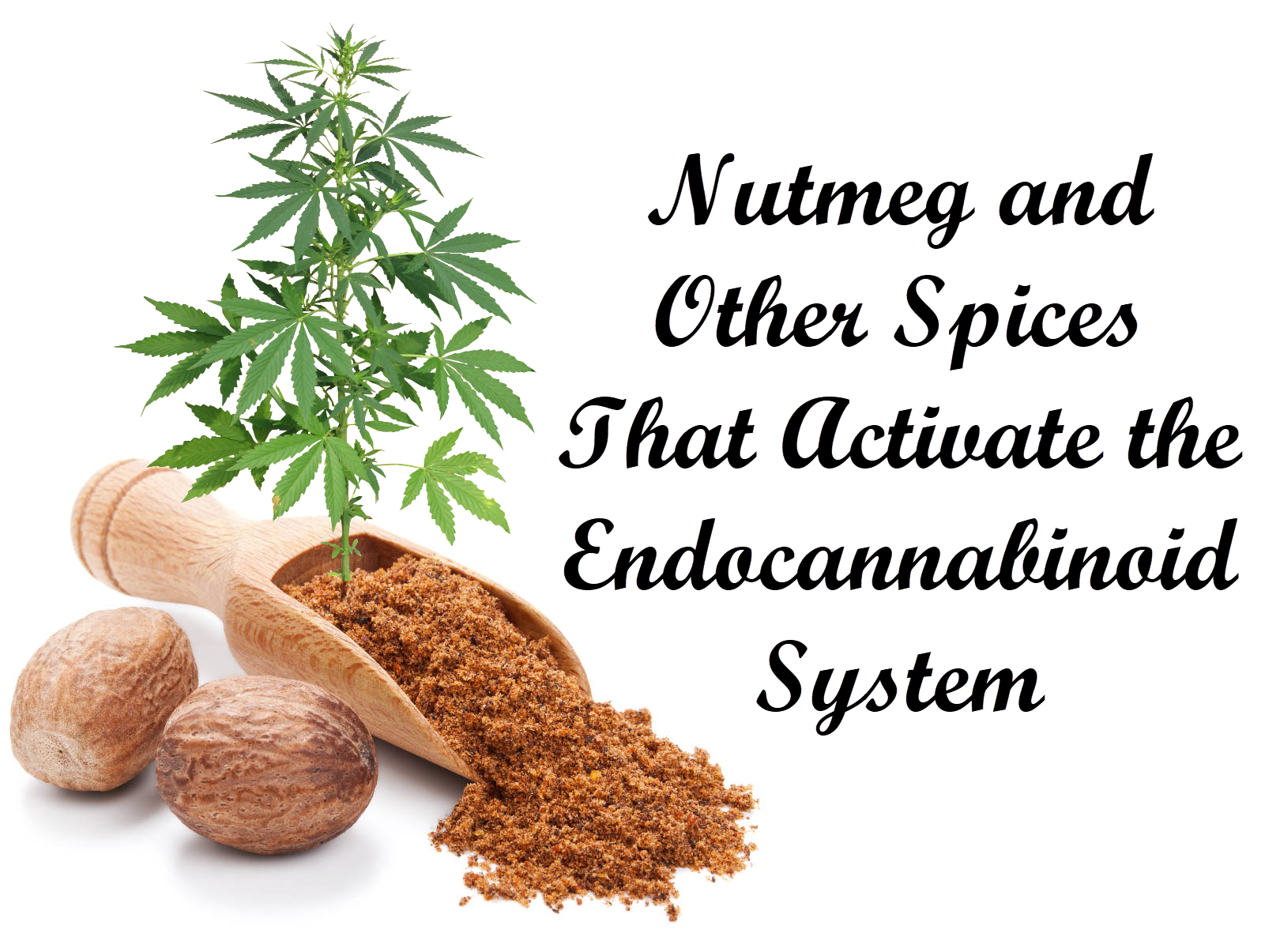If you’re reading this article, you’ve probably heard of the endocannabinoid system (ECS), the all-important physiological system whose discovery in the ‘90s helped us understand cannabis’ beneficial effects on the human body. Though researchers initially believed ECS receptors were located in the brain and nerves, they later found that they were found all over the body, including in the skin, bone, fatty tissue, immune cells, pancreas, kidney, stomach, heart, and other essential organs that regulate the way our body operates. The ECS responds, specifically, to endocannabinoids, which cannabis mimics to produce the variety of effects it’s associated with.
However, cannabis isn’t the only thing that activates and interacts with the ECS. Some spices like nutmeg and turmeric also have their own interactions. We delve into some of the ways they interact and enhance physiological functions via the endocannabinoid system and how you can integrate them into your diet.
Nutmeg
Like a lot of people, you probably heard in high school that nutmeg could be a substitute for marijuana. While it sounds like an urban legend, there may actually be some truth to it. Prison inmates, even the great Malcolm X before he converted to Islam, were known to swallow and sniff nutmeg to get high. Well, scientists at the Chicago State University have found that it’s the spice’s interaction with the ECS that may be responsible for this phenomenon.
In a study published in the Journal of Pharmacy and Pharmacology, scientists looked into 13 compounds in nutmeg and explored their ability to delay endocannabinoid breakdown, which were measured as the inhibition of FAAH and MAGL. A molecule called 5-methocylicarin A was found to be the most the most potent FAAH inhibitor. They tested it on mice and saw that it helped reduce anxious behavior. Researchers hoped the study could provide proof on nutmeg’s reputation as an inferior substitute for cannabis. The paper became one of the studies to highlight the natural abundance of endocannabinoid-modulating compounds like nutmeg.
Uses: Nutmeg can have both savory and sweet applications. Grate it into creamy sauces and desserts like creme brûlée, rice pudding, creamy pasta sauces, and chowder. It can also be mixed with chocolate and is an essential ingredient in pumpkin spice.
Peppercorn
Meanwhile, black pepper is known as a powerful anti-inflammatory that’s said to have many therapeutic benefits, from reducing nicotine withdrawal, to relieving digestive distress, to lowering blood pressure. It’s also been shown to help inhibit cancer cell proliferation in animals. It’s rich in vitamin K, manganese, and iron, and contains a slew of aromatic terpenes, similar to cannabis, such as linalool, limonene, and pinene, among others.
It’s also endowed with beta-caryophyllene, a medicinal component of a number of cannabis strains, and the only terpene to bind directly to CB2 receptors, which are responsible for regulating immune function, the peripheral nervous system and other physiological processes.
Uses: Sprinkle ground pepper on savory dishes for a little heat or add whole peppercorns to sauces for a flavor boost.
Turmeric
If you haven’t been living under a rock for the last five years, you’re probably well-acquainted with the wonders of turmeric. Much like CBD, it’s shown up in everything from teas to soaps, and even toothpastes. People swear by its healing benefits and many take turmeric supplements regularly. But part of its therapeutic benefits is due to its interaction with the ECS. In 2012, researchers identified its interaction with CB1 receptors as responsible for its antidepressant effect. Scientists noted, “treatment with curcumin, similar to the classical antidepressant amitriptyline, results in the sustained elevation of brain nerve growth factor (NGF) and endocannabinoids in dose-dependent and brain region-specific fashion.”
Uses: Turmeric is an essential ingredient in most curries and is the spice responsible for their signature bright yellow color. It can also be added to plant-based milk and heated for a relaxing and immune-boosting beverage.
Saffron
Australian researchers concluded that saffron, considered the most expensive spice in the world due to its labor intensive growing process, engages both the CB1 and CB2 receptors to enhance retinal blood flow and protection in lab rats. Meanwhile, in 2013, a group of scientists found that saffron inhibited the build up of plaque in the brain in animals affected by Alzheimer’s.
Rich in riboflavin, saffron was used as a folk medicine for treating a range of ailments and diseases, from cancer to asthma, and even pre-menstrual distress. Ancient Egyptians referred to saffron as a cure for kidney and heart problems.
Uses: Famously used in the Spanish rice dish ‘paella,’ but can also be added to soups, stews and even cakes.
Integrating these spices into everyday meals is a great way of making sure your ECS is running smoothly and continuing to assist in a number of immune and physiological functions. It’s also a good reminder that, in order to achieve a healthy body, we must remember to include a diverse range of foods into our diets, and that applies to spices as well.

